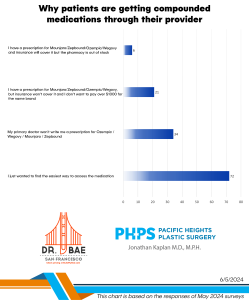
I was incredulous. I couldn’t believe the tone of surprise in two articles published yesterday in the Wall Street Journal and the NY Times regarding the Affordable Care Act. I’ll get to the details in a second but the reason I was so shocked and unable to form a coherent sentence was the suggestion in both articles that we are starting to see some unforeseen consequences of the Affordable Care Act. Unforeseen?! Anyone with knowledge of the health care system saw this coming.
In the Wall Street Journal article, they point out that more people have health insurance with the implementation of the Affordable Care Act. Which I won’t dispute. But just because you get health insurance doesn’t mean it’ll do you any good. To quote Larry Levitt, a senior vice president at the Kaiser Family Foundation, “The fundamental impetus for the law was to lower the number of uninsured, and it has clearly done that. But simply getting people insured doesn’t mean health care is affordable.” Or that your doctor will accept your insurance.
As for affordability, consumers are disappointed to find that many of the “affordable” plans have very high deductibles. Meaning that you may pay on the lower end of the spectrum in monthly premiums but if you get sick, you’re going to pay out-of-pocket, up to $12,500 per family, before the insurance benefits kick in. The problem with paying out of pocket is that it’s very difficult to shop around and see where the least expensive blood test or X-ray is available near you. Even though these tests are equivalent no matter where you get it, they’ll vary in cost depending on the hospital or outpatient facility you go to. Here’s one site that’s trying to help consumers determine cost of services before getting the bill.
The other problem highlighted in the NY Times article was regarding the expansion of Medicaid. Most of the newly insured aren’t buying private health plans. They’re enrolling in Medicaid plans which have very poor reimbursement. This means that the doctor is reimbursed by Medicaid for services below the cost of doing business. In other words, many doctors can’t afford to treat patients that have Medicaid because it’s not enough to pay the office utilities, their employees or malpractice coverage. This problem is about to get bigger.
The Affordable Care Act provided a big increase in Medicaid payments for primary care in 2013 and 2014. But that increase expires on Thursday and some doctors may experience a cut of 43% in reimbursements. Many probably think doctors make too much money anyway but a 43% cut is a big deal for anyone.
The fact remains that the Affordable Care Act succeeded mostly in getting more consumers bad health insurance coverage. Either it wasn’t affordable at all or it saddled them with coverage that didn’t provide them with timely care or the continuity of care they were seeking. But I still maintain that none of this should be counted as unexpected. Sometimes a bad deal is worse than no deal.
Click here for the original blog post written by Dr. Jonathan Kaplan for BuildMyBod.




